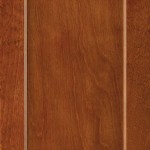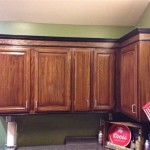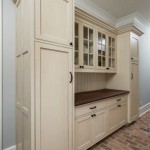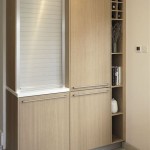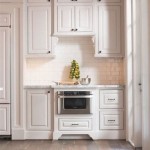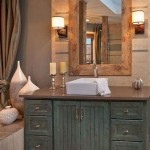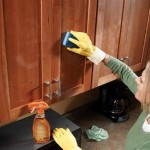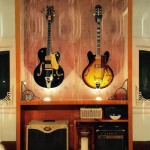Replacing Medicine Cabinet Mirror Door Hinges: A Comprehensive Guide
The medicine cabinet, often a staple in bathrooms, provides valuable storage space while conveniently incorporating a mirror. Over time, the hinges that secure the mirror door can weaken, corrode, or break, leading to a sagging, misaligned, or even detached mirror. Replacing these hinges is a common and relatively straightforward home repair project that can significantly improve the functionality and aesthetics of the bathroom. This article provides a comprehensive guide to identifying, selecting, and installing replacement hinges for a medicine cabinet mirror door.
Before embarking on the hinge replacement process, it’s crucial to understand the different types of hinges commonly used in medicine cabinets. Identifying the existing hinge type is vital for selecting the correct replacement. This will ensure a proper fit and optimal functionality.
One of the most common types is the surface-mounted hinge. These hinges are attached directly to the surface of the cabinet frame and the back of the mirror door. They are relatively easy to install and replace. Another frequent type is the European-style hinge, also known as a concealed hinge. These hinges are partially or fully concealed when the door is closed and offer a clean, modern aesthetic. They usually require drilling recesses (mortises) into both the cabinet frame and the door to accommodate the hinge mechanism. A third type is the pivot hinge, which allows the door to swing open on a central pivot point, often found in smaller medicine cabinets or those with a contemporary design. Less common, but still encountered, are wrap-around hinges, which wrap around the edge of the cabinet frame for added stability. These are often found in older cabinets.
Key Point 1: Identifying the Existing Hinge Type and Measuring
The first step in replacing medicine cabinet mirror door hinges is accurately identifying the existing hinge type. Examine the hinges carefully, paying attention to how they are attached to the cabinet frame and the mirror door. Consider the hinge's shape, size, and any markings or manufacturer's logos. Take clear photographs of the hinges from multiple angles, which can be helpful when visiting a hardware store or searching online for replacements.
Once the hinge type is identified, precise measurements are essential. Measure the overall length and width of the hinge, as well as the distance between screw holes. For European-style hinges, measure the diameter of the cup that fits into the mortise drilled into the door. These measurements will ensure that the replacement hinges are a proper fit and will align correctly with the existing mounting points.
If the original hinges are severely damaged or corroded, it may be challenging to obtain accurate measurements. In such cases, consider carefully removing one of the hinges (if possible) and taking it to a hardware store for comparison. A knowledgeable store associate can often help identify the hinge type and find a suitable replacement. Alternatively, search online using detailed descriptions and photographs of the hinge to find a matching product.
It is also crucial to note the overlay of the door. Overlay refers to how much the door overlaps the cabinet frame when closed. Common overlays include full overlay (the door completely covers the frame), half overlay (the door partially covers the frame), and inset (the door sits flush with the frame). Replacing hinges with the incorrect overlay will result in a door that does not close properly or aligns poorly with the cabinet frame.
During the measurement process, it's advisable to note the condition of the cabinet frame and the mirror door where the hinges are attached. If the wood is damaged, cracked, or stripped, it may be necessary to repair it before installing the new hinges. This can be done using wood filler or epoxy to reinforce the mounting points.
Before purchasing replacement hinges, verify their material and finish. Hinges are typically made of steel, brass, or stainless steel. The finish should match the existing hardware in the bathroom to maintain a cohesive aesthetic. Common finishes include chrome, brushed nickel, oil-rubbed bronze, and polished brass. Consider the environment in which the hinges will be used. In humid bathrooms, stainless steel or corrosion-resistant finishes are recommended to prevent rust and prolong the life of the hinges.
Key Point 2: Gathering Tools and Preparing the Workspace
Successfully replacing medicine cabinet mirror door hinges requires a few essential tools and a prepared workspace. Having the necessary tools readily available will streamline the process and minimize the risk of damaging the cabinet or the mirror door.
The core tools needed include a screwdriver (both Phillips head and flathead), a drill with various drill bits (particularly for European-style hinges), a measuring tape, a pencil, and safety glasses. A level is useful for ensuring the door is aligned correctly after installation. A utility knife can be helpful for scoring any paint or caulk around the existing hinges to prevent chipping or damage during removal.
Before commencing any work, prepare the workspace by clearing the area around the medicine cabinet. Cover the countertop and floor with a drop cloth or newspapers to protect them from scratches or debris. Ensure adequate lighting to improve visibility and accuracy during the installation process.
It is also prudent to have a small container or bag to store the screws from the old hinges. Labeling the container with the location of the screws (e.g., "top hinge, cabinet side") can be helpful for reassembly if needed. This prevents confusion and ensures that the correct screws are used when installing the new hinges.
If the cabinet frame or mirror door requires minor repairs, such as filling stripped screw holes, gather the necessary materials, such as wood filler, epoxy, or small wood shims. Allow sufficient time for these repairs to dry and cure before proceeding with the hinge installation.
Prior to removing the existing hinges, carefully support the mirror door to prevent it from falling and potentially breaking. This can be done by having an assistant hold the door or by using shims or blocks to prop it up. This is particularly important for larger or heavier mirror doors.
When working with power tools, such as a drill, always wear safety glasses to protect the eyes from flying debris. Use caution when drilling near the mirror to avoid accidentally cracking or shattering it.
Key Point 3: Installing the New Hinges
With the necessary preparations complete, the installation of the new hinges can begin. The specific steps will vary depending on the type of hinge being installed, but the following general guidelines apply.
First, carefully remove the old hinges. Use a screwdriver to loosen and remove the screws that secure the hinges to the cabinet frame and the mirror door. If the screws are stripped or difficult to remove, try using a screw extractor or applying penetrating oil to loosen them. Avoid using excessive force, as this can damage the surrounding wood or the mirror.
Once the old hinges are removed, clean the mounting surfaces on the cabinet frame and the mirror door. Remove any old paint, caulk, or adhesive that may be present. This will ensure a clean and flush surface for the new hinges to attach to.
Position the new hinges in the same location as the old hinges. Use a pencil to markPilot holes are recommended, especially when working with hardwood or brittle materials. Pre-drilling helps prevent the screws from stripping or breaking and ensures that they are properly aligned.
Secure the new hinges to the cabinet frame and the mirror door using the appropriate screws. Ensure that the screws are tightened securely, but avoid over-tightening them, as this can strip the screw holes. If the screw holes are stripped, use wood filler or epoxy to repair them before re-installing the screws.
After installing the hinges, test the operation of the mirror door. Open and close the door several times to ensure that it swings smoothly and aligns properly with the cabinet frame. If the door is sagging or misaligned, adjust the hinges as needed. Some hinges have adjustment screws that allow for fine-tuning the door's position.
For European-style hinges, the installation process is more involved and requires creating mortises (recesses) in the cabinet frame and the mirror door to accommodate the hinge cups. Use a Forstner bit or a hole saw to drill the mortises to the correct depth and diameter. Ensure that the mortises are aligned properly and that the hinge cups are securely seated within them.
If necessary, use shims to adjust the alignment of the mirror door. Shims can be placed behind the hinges to compensate for any gaps or uneven surfaces. Small pieces of cardboard or wood can be used as shims.
Once the installation is complete, inspect the hinges and the surrounding surfaces for any signs of damage or misalignment. Touch up any paint or caulk as needed to create a clean and professional finish. Clean the mirror to remove any fingerprints or smudges.

Can Anyone Identify This Hinge From A Medicine Cabinet Tri View Door Doityourself Com Community Forums

Adjusting Robern Medicine Cabinet With Sagging Mirror Doors Hometalk

Any Way To Remove The Door A Medicine Cabinet Hometalk

How To Remove A Medicine Cabinet Kay S Place

How To Replace Cabinet Hinges A Diy Tutorial For Beginners

How To Turn A Mirror Into Medicine Cabinet Diy Bathroom

Why Designers Most Medicine Cabinets Some Genius Alternative Bathroom Storage Solutions Emily Henderson

The Best Medicine Cabinets For A Bathroom Upgrade Picks From Bob Vila

Update Your Bathroom Vanity With New Cabinet Doors The Handyman S Daughter

Dilemma Recessed Medicine Cabinet On Wall Next To Vanity Mirror
Related Posts

